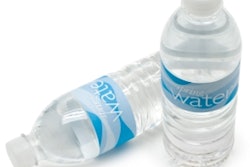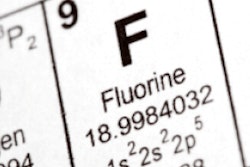
Employees with access to water containing fluoride can have related oral health benefits, but at least one California university is falling short of providing clean and readily available fluoridated water, according to a study published in the Journal of the American Dental Association.
Researchers found that 25% of water stations in public areas at hospitals and campuses owned by the University of California, San Francisco (UCSF) were obstructed, dirty, or had unsatisfactory flow. Their research could be replicated to help other universities and organizations assess and improve fluoridated water access.
"The aim of our study was to assess empirically the availability, appeal, placement, and promotion of fluoridated tap water in publicly accessible spaces in and around UCSF campuses compared with retail beverage locations, which could be a model for other work sites," wrote the authors, led by Dr. Navita Kalair, a general dentist at Familia Dental in Abilene, TX (JADA, December 21, 2021).
The researchers analyzed data from December 2019 to February 2020 to better understand the availability of fluoride and its implications for oral health. They looked at nearly a dozen data points, including location, type of beverage, water sources per station, cleanliness, flow, proximity, signage, and obstruction.
The study focused on all UCSF-owned hospitals and campuses in San Francisco but did not include dorms, research buildings, restricted access areas, or private office spaces. It did, however, include tap water and retail beverage locations that were publicly accessible, such as vending machines, food courts, and cafeterias.
Using a web-based survey tool, Kalair and colleagues identified 377 fluoridated water sources in 230 total locations. Water sources included drinking fountains and bottle filling stations. Each location had between one and three sources of water, and the most common source of tap water was water fountains.
On paper, one water station was available for every 80 people at UCSF locations, but practically, that ratio is likely much higher, the authors noted. One in four water stations were obstructed, dirty, or had bad flow, and one in five water coolers lacked disposable cups.
"We identified several barriers to fluoridated water consumption," the authors wrote. "Of 377 water sources found at 230 locations, 96 were not functional owing to obstruction, cleanliness, or flow issues."
The researchers observed cleanliness issues and natural debris such as dirt, rust, and mold in many water stations. Furthermore, only 30% of retail beverage locations had a tap water station within sight.
Regarding signage, they found signs in 16 retail beverage locations and at 13 water stations. While some signs promoted the importance of making healthy drink choices, five signs provided notice about water quality.
"When considering both water and retail beverage locations, only 11% had signage promoting healthier beverage choices," the authors wrote.
The study had some shortcomings; for example, privately accessible areas may offer access to additional water sources. The authors were also unable to identify water sources and their physical characteristics at stations near beverage locations because of the way they were mapped.
The researchers' assessment tools can be applied to other campuses and work sites to analyze and encourage fluoridated water consumption, according to the authors. Improving access to fluoridated water -- in conjunction with other strategies -- can improve public health, they noted.
"The tap water mapping protocol elaborated in our study can be applied in future campus or work site assessments to supply work site wellness administrators with actionable strategies to increase fluoridated water consumption," they wrote.



















